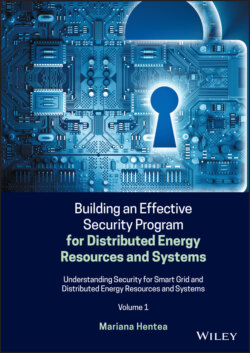Читать книгу Building an Effective Security Program for Distributed Energy Resources and Systems - Mariana Hentea - Страница 30
1.3.4 Microgrid
ОглавлениеA group of interconnected loads and DERs within clearly defined electrical boundaries that acts as a single controllable entity with respect to the grid is called a microgrid. The microgrid can connect and disconnect from the grid to enable it to operate in both grid‐connected and island modes. The concept of the microgrid is rapidly evolving beyond backup power to include islanding capabilities for critical infrastructure and the management of DERs (e.g. batteries, renewables, and EVs) in conjunction with building or industrial loads.
Most microgrids operating today are single‐customer microgrids and focus on integrating traditional generation resources (e.g. CHP and diesel generators) with new technologies such as renewable generation and electric energy storage systems. Customized communication and control technologies were developed to enable these resources to act as a single entity with respect to the grid.
Figure 1.14 shows the concept of a nested microgrid with a naming convention according to their configuration that is used to differentiate them. Microgrids can exist in multiple configurations: independently, networked along a feeder, or nested within another. Microgrids help with:
Reliability by serving as a grid resource in grid‐connected mode and switching to island mode on detecting a contingency, thus improving reliability metrics
Energy security by ensuring critical loads can be served for sustained periods of time during catastrophic events such as hurricanes or attacks
Environment by operating in a manner to maximize electricity produced from renewable resources to reduce overall emissions
Figure 1.14 Alternative microgrid configurations.
Source: [DOE 2015b]. Public Domain.
